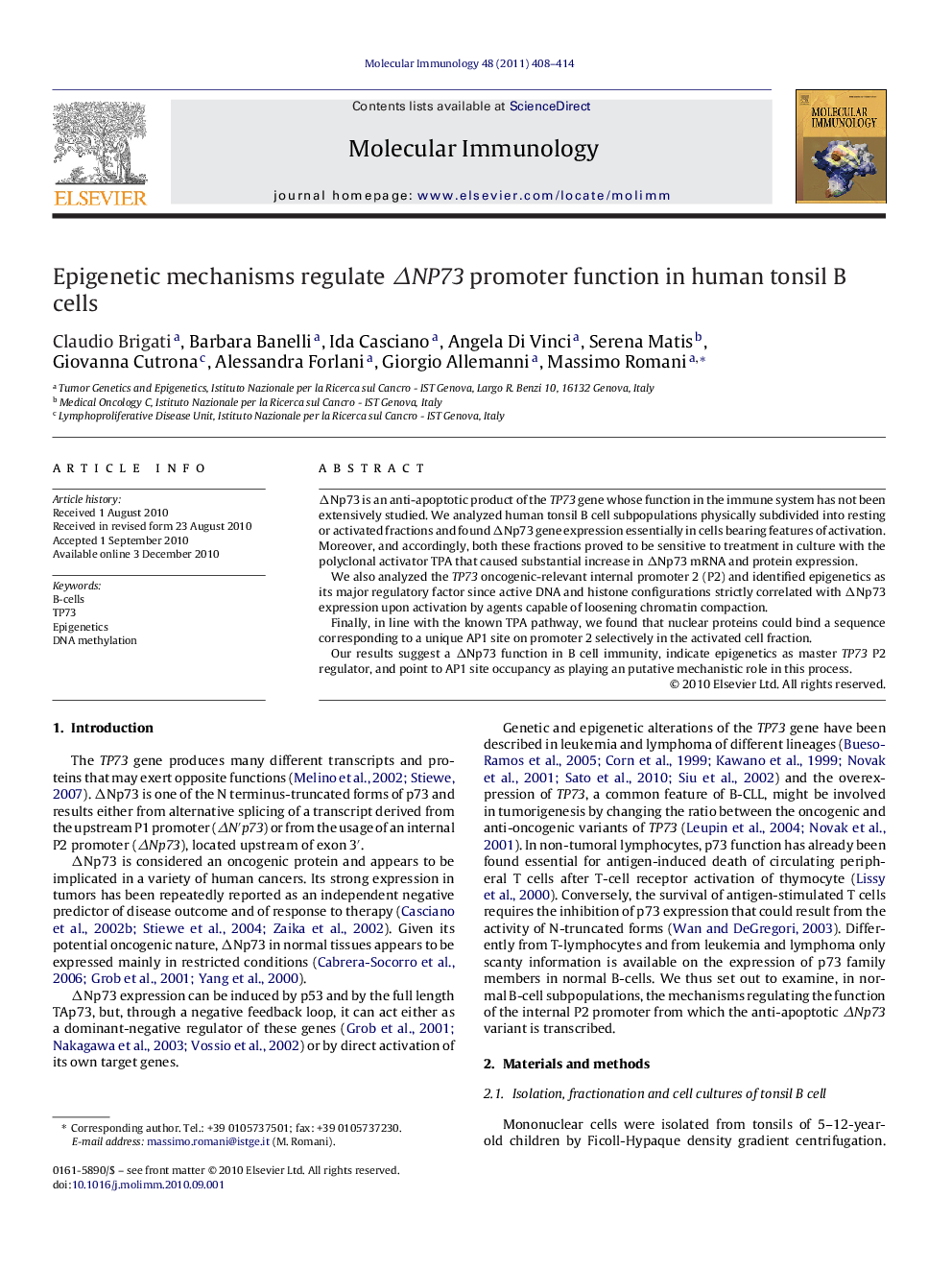| Article ID | Journal | Published Year | Pages | File Type |
|---|---|---|---|---|
| 5917671 | Molecular Immunology | 2011 | 7 Pages |
ÎNp73 is an anti-apoptotic product of the TP73 gene whose function in the immune system has not been extensively studied. We analyzed human tonsil B cell subpopulations physically subdivided into resting or activated fractions and found ÎNp73 gene expression essentially in cells bearing features of activation. Moreover, and accordingly, both these fractions proved to be sensitive to treatment in culture with the polyclonal activator TPA that caused substantial increase in ÎNp73 mRNA and protein expression.We also analyzed the TP73 oncogenic-relevant internal promoter 2 (P2) and identified epigenetics as its major regulatory factor since active DNA and histone configurations strictly correlated with ÎNp73 expression upon activation by agents capable of loosening chromatin compaction.Finally, in line with the known TPA pathway, we found that nuclear proteins could bind a sequence corresponding to a unique AP1 site on promoter 2 selectively in the activated cell fraction.Our results suggest a ÎNp73 function in B cell immunity, indicate epigenetics as master TP73 P2 regulator, and point to AP1 site occupancy as playing an putative mechanistic role in this process.
Research highlightsⶠTP73 generates anti-oncogenic (TAp73) and oncogenic (ÎTA) variants. ⶠ“Activated” but not “resting” normal B-cells express the oncogenic ÎNP73 variant. ⶠÎNP73 expression is tightly controlled by epigenetic mechanisms. ⶠWe suggest that this variant may have important functions in normal B cells. ⶠThis is one of the first evidence of ÎNP73 expression outside cancer or development.
